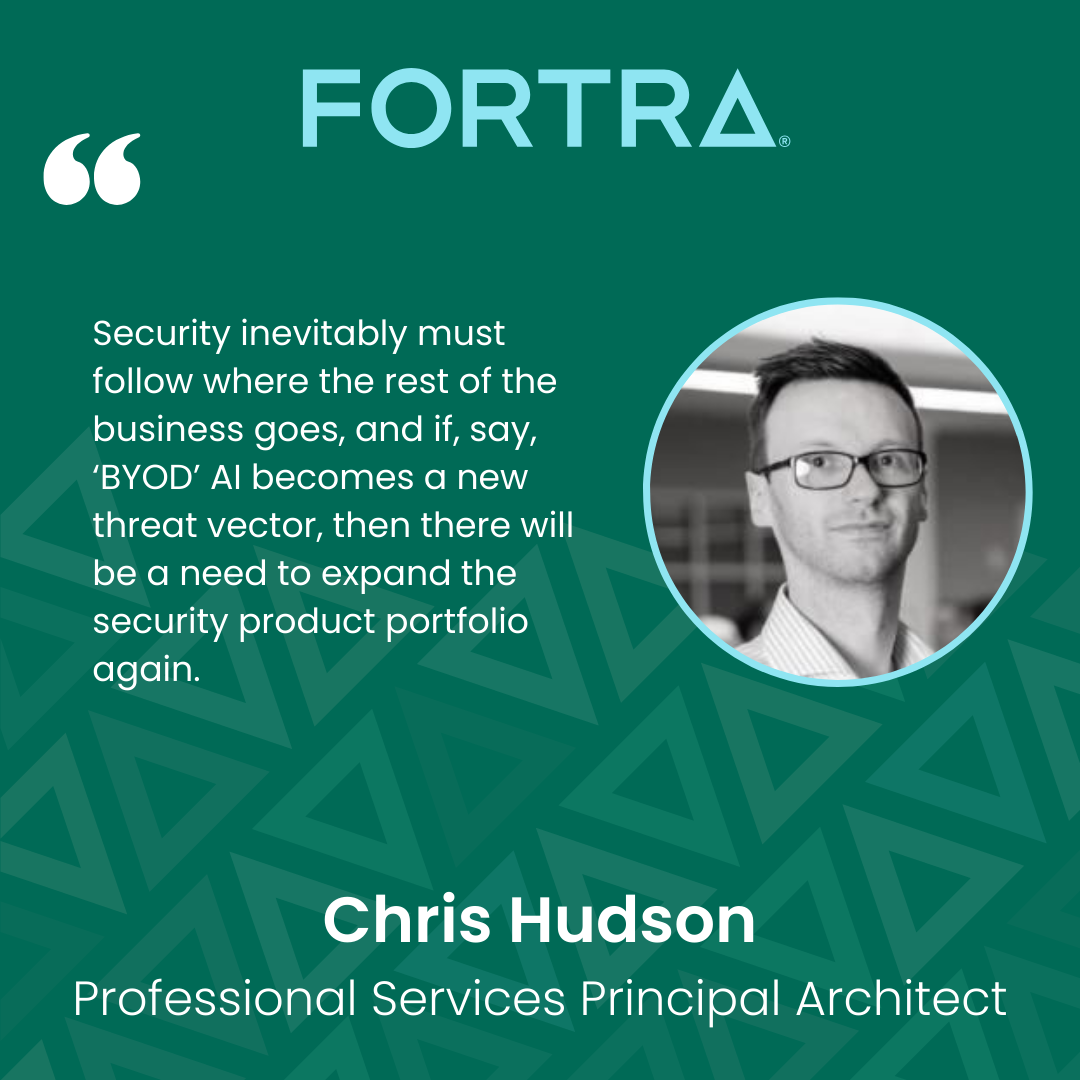Table of Contents
What Is Planned for Next Year?
As we approach 2025, modern threats, tightening compliance standards, and the widespread adoption of cloud technologies are proving a challenge for companies in every sector. Amid static budgets, businesses are compelled to make strategic investment decisions to navigate these challenges effectively.
We chatted with several Fortra teammates who interface with our customers on a regular basis to gain a deeper understanding of how these dynamics are impacting customer sites. Their insights shed light on key concerns, achievements, and future plans, highlighting how organizations are balancing limited resources with the need to implement modern technologies.
This blog looks at the current landscape of cybersecurity, from the challenges businesses faced in 2024 to the strategies they plan to implement in the coming year. We also explore the major factors influencing cybersecurity budgets as organizations prepare to safeguard their digital assets in the face of new risks and opportunities.
Evolving Cyber Threats
The rapid evolution of cyber threats is a customer concern now and for the foreseeable future, says Krzysztof Sobierajski, a professional services consultant at Fortra.
“Customers are concerned about the fast pace at which cyber threats evolve, particularly with the advent of AI-driven attacks, deepfake technology, and malware that evade traditional security measures. Also, with remote and hybrid work models persisting, detecting and mitigating insider threats, whether malicious or accidental, has become increasingly challenging. Organizations are investing in data classification (DC), data loss prevention (DLP), and user and entity behavior analytics (UEBA) solutions to address this issue.”
Lisa Lombardo, a software development manager at Fortra, agrees that customers are concerned about their people, as they are susceptible to threats that prey on their natural biases. She says:
“This includes internal threats accidental (phishing, social engineering, and suchlike) and intentional with malicious insiders who abuse their access privileges in the enterprise. The increased likelihood of cybersecurity attacks due to more AI being available for building offensive attacks is another concern, as are customers’ readiness, preparedness, and ability to execute their disaster recovery or business continuity plans if some event occurs that requires it. "
Human Bandwidth
For Chris Hudson, a principal solution architect at Fortra, the big challenge for operations in 2025 remains similar to the one he’s seen time and again — having enough human bandwidth to achieve their security operational goals.
“While massive strides have been made in recent years to tighten up security processes and tooling to reduce the load on individuals in SecOps teams, there’s still a massive amount of pressure due to the challenges around finding skilled personnel and a constantly changing threat theatre. Although buzzword product categories like ‘zero trust’ and ‘artificial intelligence’ are exciting and are just starting to show some promise for teams, there’s a long way to go. Until then, having enough expertise remains the top priority for ensuring success and maintaining a secure environment.”
The Ability to Effectively React
Threat detection is another concern, and customers are focused on enhancing their ability to respond effectively to threats, which extends into various tactical priorities and areas of improvement. Troy Thomson, a senior director of professional services at Fortra, says customers and prospects are looking to identify whether the detection they have in place now is truly effective.
“Are further areas of detection, correlation, or tuning required? Are the systems supporting the business thoroughly assessed for changes and non-compliance with hardening standards, and are they resilient enough to handle widespread disruptions? How are false positives and negatives managed within the current response strategies? Are business continuity and backup processing plans merely theoretical or regularly tested through live incident scenarios?”
No Wiggle Room
Bob Klapperich, a senior support engineer at Fortra, believes that customers want applications and products that are seamless to use. He says:
"From a support side, we want to give such great support that, when it comes to maintenance renewal time, the customer says, “It’s a no-brainer; I have to keep Fortra support on my products because I can always count on them if I have questions/issues.”

What Is Planned for Next Year?
In 2025, all these challenges will shape customers’ cybersecurity strategies, forcing businesses to rethink their investment priorities. As cyber threats grow in sophistication, entities will be driven to adopt more proactive and adaptive defenses. These mounting pressures are set to influence decision-making, pushing companies to invest heavily in advanced technologies like AI-driven threat detection, zero-trust frameworks, and cloud security enhancements to safeguard their digital assets and maintain operational resilience.
Lombardo says there should be continual assessment and evaluation of their defenses and related tools, processes, and people to protect the organization. This includes assessing the third-party organizations that provide IT infrastructure in the enterprise and in the cloud to trust but verify their processes, tools, and people that protect the organization’s assets. Those who are not using MFA for all authentication approaches to corporate resources will create plans and projects to do so.
Controlling Access
The use of account expiration on all accounts used to access a corporate resource with regular review and extension of the expiration date based on an explicit assessment of the use and need is a priority, Lisa adds. She also shares:
“Often, contractors get their access extended as the contract is renewed or extended, but a similar concept should be used for employees. If performance reviews are done yearly, after the review, extend the employee’s access if merited. This also may reveal that access was given to something within the last review period, and the business need is no longer needed, so the access should be revoked.”
Training and More Training
A leading project shared by many organizations for 2025 is an expansion of security awareness training, adds Thompson. He shares:
“It’s needed across every functional area within the business, often including vendor and partner participation. 2025 shows more interest in interactive training based on unique business models and even live examples embedded in email, Teams, Zoom, SMS, and social media. Another interesting project area is recruiting, moving validation of candidate identity and verification of background as an early step during intake, before any review of skills by recruiting teams or hiring managers.”
To mitigate the cybersecurity talent shortage, organizations will increase their budget for cybersecurity training programs, certifications, and partnerships with educational institutions, says Krzysztof. “Automation of repetitive tasks through AI and ML will also be considered.”
Securing the Cloud
Reliability and cost efficiency go hand in hand. With this in mind, migrating to the cloud will be a priority for 2025 (if it isn’t already). Klapperich says IBM i customer project planning in 2025 will involve upgrading to IBM i 7.5 as IBM i 7.3’s end-of-support went into effect on 20 September 2023. Customers will reach out to us for software compatibility when they go to IBM i 7.5.
With cloud adoption continuing to accelerate, organizations will also prioritize cloud-native security tools and multi-cloud security frameworks to address the complexities of securing data across diverse cloud environments. And, considering the human factor, customers will bolster their Insider Threat Management Programs (ITMPs) by integrating behavioral analytics, DLP solutions, and privileged access management (PAM) tools to detect and respond to insider risks more effectively, says Krzysztof.
Measuring Security Success
“For many of my clients, 2025 will be a year of improving workflows and processes,” comments Hudson. Many have mature tools in place that keep getting better and better, meaning that there’s time to focus on the human processes. More and more auditors are looking at how teams respond to security incidents rather than just ensuring they're capturing data about threats, which means there’s more to be done to ensure that robust workflows for responding to alerts are both effective and “audit-ready.” With the threat of more international regulations and standards with hefty fines, developing solid security runbooks will be a big part of measuring their success in 2025.
Swaying the Budget
The question for customers, says Thompson, is how to do more with less, and the answer is usually automation or automation with AI.

For Hudson, there is still a lot of change in security, with significant effort spent swapping between vendors, and, as a result, there are many questions about how best to spend now to be in a good place in three to five years.

Chris says:
"For many businesses, this will be a chance to leverage service providers more as the domains that security touches get more complicated over time, but that means carving out more on the human side of security than they have in the past. "
Krzysztof mirrors this sentiment, adding:
"Increasing sophistication of cyber threats, including AI-powered attacks, APTs, and nation-state actors, will drive higher budget allocations for next-gen security tools, threat intelligence feeds, and threat-hunting capabilities. To address modern threats, companies will allocate budgets to emerging technologies such as PQC, zero-trust network access (ZTNA), secure access service edge (SASE), and AI-driven security automation to stay ahead of the threat curve and enhance their security posture."
The Wins
It’s not all about the challenges; there have been areas where customers have gained ground, too. Thompson says the market is entirely satisfied with reducing the number of vendors and improving negotiation on initial purchase and renewal events. “Procurement is a much-improved practice within many of our customers due to tough market dynamics and aggressive price increases by vendors.”
Krzysztof believes that investments in incident response platforms and resilience testing have led to faster recovery times and more effective mitigation of cyber incidents, reducing the overall impact on customers' business operations.

Also, considering that maintaining compliance with a growing number of complex regulations, such as ISO 27001, Cybersecurity Maturity Model Certification (CMMC), and industry-specific frameworks, has been a challenge for some time, customers have invested heavily in DLP, DC, and GRC solutions and. “As a result, have achieved higher levels of compliance with complex global regulations through automated risk assessments and continuous monitoring,” Krzysztof ends.
Make Fortra Your Cybersecurity Ally
Our mission at Fortra is to help organizations increase security maturity while decreasing operational burden. Our vision is a stronger, simpler future for cybersecurity. Who’s with us?




